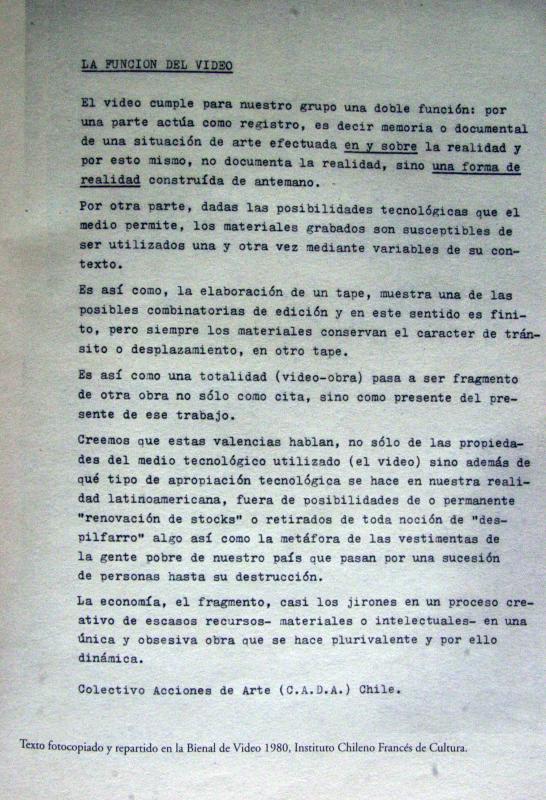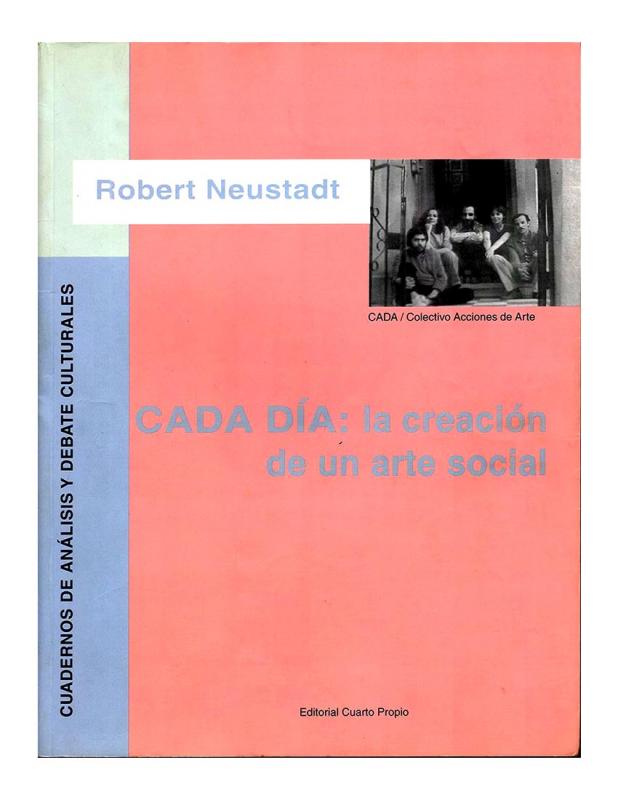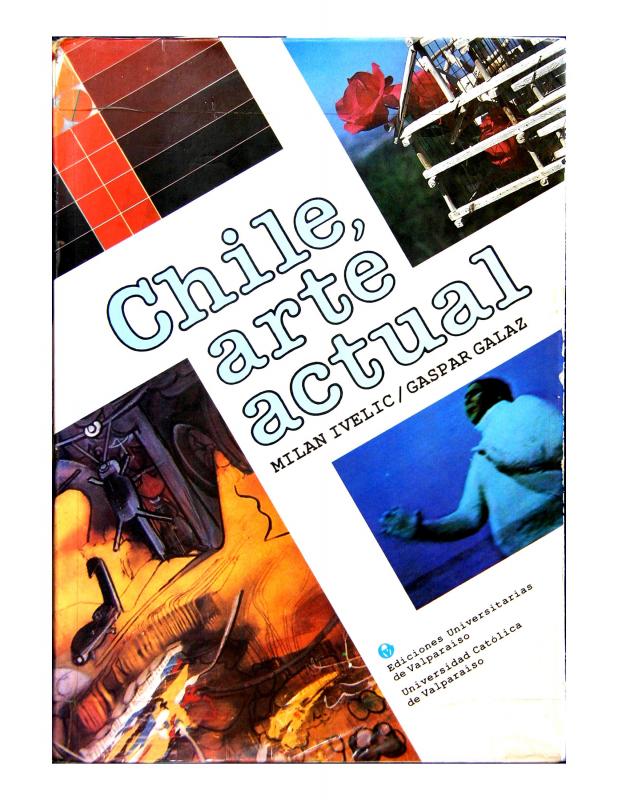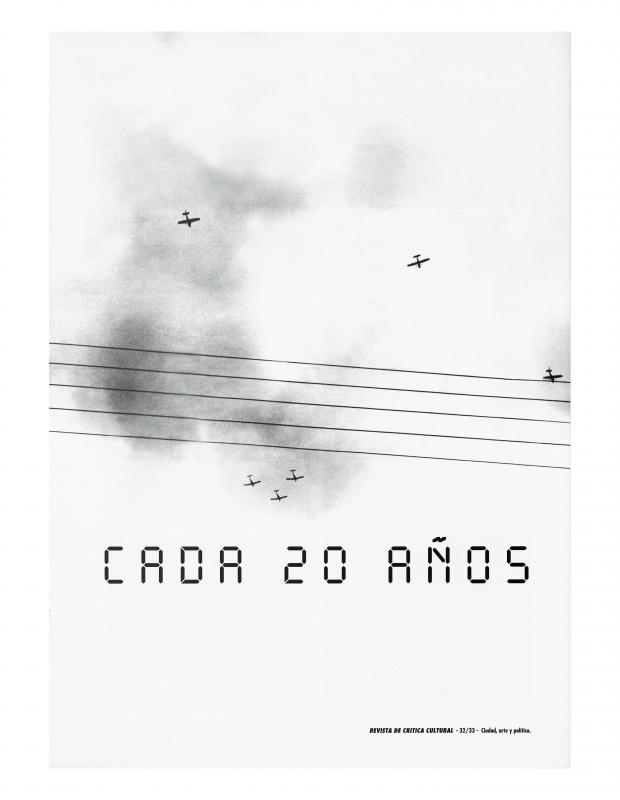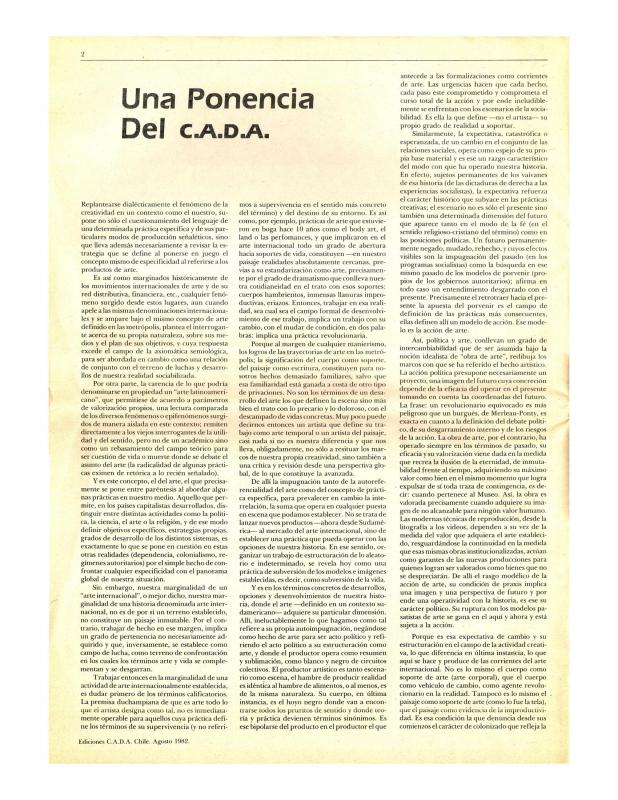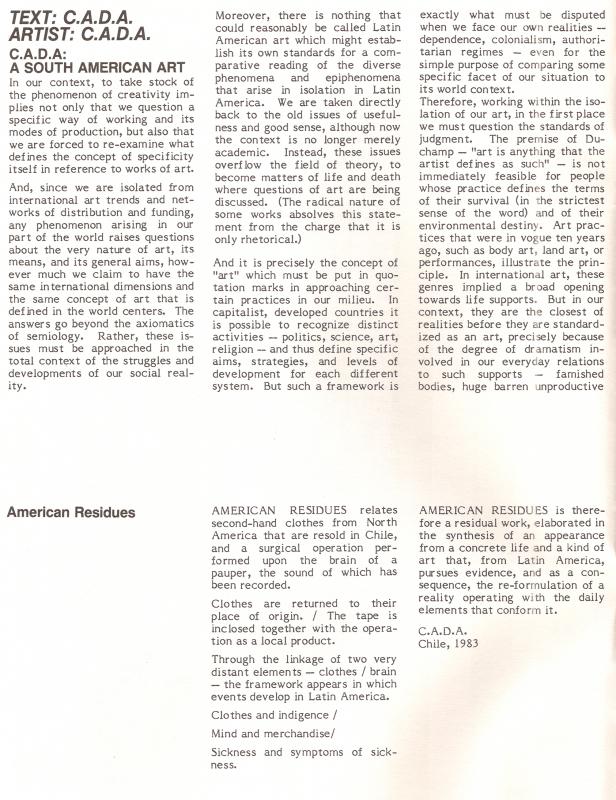“La función del video” [The Role of Video] was jointly written by Diamela Eltit (b. 1949) and Lotty Rosenfeld (1943–2020), both of whom were members of the art action group C.A.D.A. (Colectivo Acciones de Arte, 1979–85). This essay is similar to another (eponymous) text written by the group; both were photocopied and circulated from hand to hand. They include similar discussions on how video can be used, either as a means to record actions or as a tool with which to create new video art works. [See the ICAA Digital Archive for the text written by the group: “La función del video” (doc. no. 744664).]
In addition to Eltit and Rosenfeld, the roster of C.A.D.A. members included the artist Juan Castillo (b. 1952), the sociologist Fernando Balcells (b. 1950), and the poet Raúl Zurita (b. 1950). The group was known for works that used the city (Santiago) and art spaces as supports. In 1983 they orchestrated one of their most emblematic projects, one that still resonates to this day, calling on all Chilean artists to scrawl the message “NO +” [NO MORE] on city walls, to be completed with urgent demands to address the social problems in their dictatorial, neoliberal society. This message soon appeared everywhere in Santiago and went on to become the slogan for citizens’ uprisings. [For other texts that discuss the group’s work, see the following in the ICAA Digital Archive: “Cada día: la creación de un arte social” (doc. no. 732411) by Robert Neustadt; “La ampliación del espacio crítico” (doc. no. 734883) by Milan Ivelic and Gaspar Galaz; “Cada 20 años” (doc. no. 740299) by Diamela Eltit; “Una ponencia del C.A.D.A” (doc. no. 732133) and “C.A.D.A.: A South American Art” (doc. no. 731898), the last two were jointly written by the group].
Eltit and Rosenfeld were a creative pair outside of the C.A.D.A. group as well. For example, Rosenfeld produced Zona de dolor I (1980) and Zona de dolor II (1981). In the first “Zone of Pain” Eltit is shown with her arms covered in (self-inflicted) cuts. She reads aloud from her novel Lumpérica (in a brothel in Santiago) with some people listening to her. She then scrubs the sidewalk in front of the brothel. In the second video Eltit kisses a schizophrenic beggar. The two artists jointly produced the video installation Traspaso cordillerano [Andean Crossing] (1981), for which they were awarded the Salon Prize at the VII Concurso de la Colocadora Nacional de Valores (Museo Nacional de Bellas Artes) in Santiago. In 1991 they premiered the documentary Chile: Historia del sufragio femenino (1889–1949) [Chile: A History of Female Suffrage] directed by Rosenfeld, with a script by Eltit. In similar fashion they also coproduced ¿Quién viene con Nelson Torres? [Who Is Coming With Nelson Torres] (2001), which was first shown at the Museo de Arte Contemporáneo de la Universidad de Chile.

